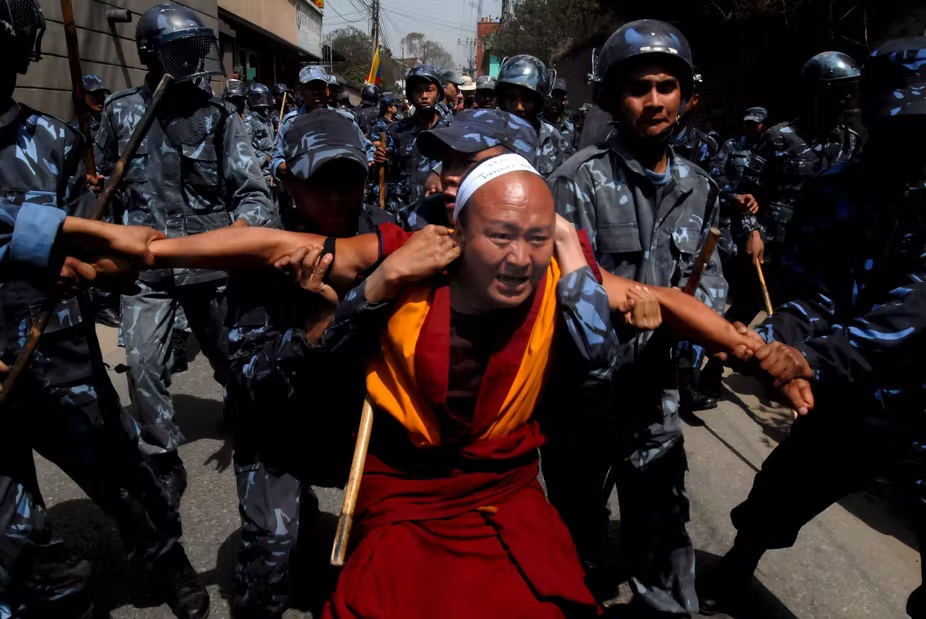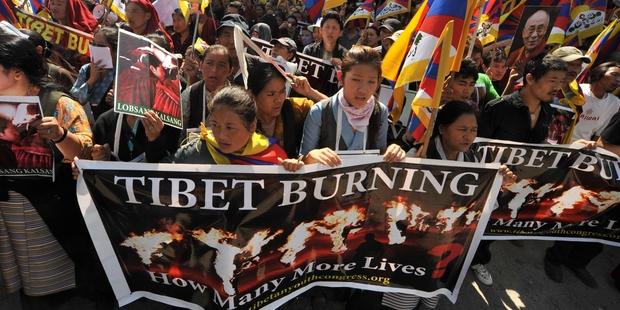|
Getting your Trinity Audio player ready...
|

Introduction
Tibet is a highly disputed region located between the mountainous borders of China, India, Nepal, and Bhutan. In 1950, the People’s Liberation Army (PLA) invaded the Tibetan region and seized control by force. Before 1950 Tibet was largely isolated from the rest of the world. It constituted a unique cultural and religious community, marked by the Tibetan language and Tibetan Buddhism. Little efforts were made to facilitate communication with outsiders, and also the economic development was minimal. Tibet was invaded by China in 1950; a year after the communist party began its rule in China. Tibetans were forced to sign a “Seventeen Point Agreement for Peaceful Liberation of Tibet” in 1951, which was used as a legal document to validate its illegal occupation of Tibet. Knowing well that this is not sufficient, China is pushing to recognize Tibet to be historically a part of China.
In the aftermath of the Chinese invasion, thousands of Tibetans lost their lives in protesting the invasion and thousands more fled to neighboring countries, India and Nepal. Tibetans in Tibet are denied their fundamental rights to freedom of speech and assembly, freedom to freely practice their religion, and sustain their identity and language. Tibet is under siege, with major cities under heavy surveillance using face recognition technology. The shrinking space for protest and continued oppression has led to the self-immolation of 155 Tibetans. Many Tibetans consider China’s action to be an invasion of a sovereign country, and the continued Chinese presence in Tibet is deemed an occupation of a foreign power. The Chinese, on the other hand, believe that Tibet has been a rightful part of China for centuries and that they liberated Tibet from a repressive regime in which much of the population lived in serfdom.
The Dalai Lama, an individual said to be an incarnation of the Buddha of Compression, has been both the political and spiritual leader of the country. The 14th Dalai Lama was only 24 years old when this all came to an end in 1959. The communist Chinese invasion in 1950 led to years of turmoil, which culminated in the complete overthrow of The Tibetan Government and the self-imposed exile of the Dalai Lama and 100,000 Tibetans in 1959.
People, Economy, and Culture of TibetThe population of Tibet is almost entirely Tibetan, with Han (Chinese), Hui (Chinese Muslims), Mona, Lhoba, and other minority nationalities. Thus, the majority of the people of Tibet have the same origin, have traditionally practiced the same religion, and speak the same language. Although Tibet is rich in mineral sources, its economy has remained underdeveloped. When we talk about finance and other services, there were no banks before 1951. Small loans to be paid with interest could be obtained from local merchants, and the Tibetan government loaned public funds at interest as a means of collecting revenues. But especially since the 1980s, banks have established branches in the region and have also extended agricultural and commercial credit and introduced Chinese and foreign currency exchange services.
In addition to this, Tibet is one of the world’s best-known tourist destinations, renowned as a Mecca for mountaineering and adventurism, cultural and scientific exploration, and religious pilgrimage, thus tourism has become a pillar of the Tibetan economy.
Human Rights Violations by China
In Tibet today, there is no freedom of speech, religion, or press, and arbitrary dissidents continue. China uses severe surveillance and censorship of social media, email, and telephone conversations to try to restrict the distribution of information inside Tibet. The flow of information out of Tibet is also closely controlled by China. Foreign journalists, human rights organizations, and diplomats are rarely granted permission into Tibet and, when they are, Chinese officials closely monitor them. Tibet’s entire way of life is under threat. Dissent, protest, or simply wishing the Dalai Lama a happy birthday or carrying a Tibetan’s flag on your phone is enough to make you a criminal. Tibetans must self-censor to avoid being imprisoned. Protestors are jailed, tortured, and possibly shot.
Forced abortions, sterilization of Tibetan women, and transfer of low-income Chinese citizens threaten the survival of Tibet’s unique culture. China has utilized economic incentives and force to relocate nearly two million Tibetan nomads from their ancestral homelands to metropolitan areas. Without the skills to obtain work in an urban environment, nomads face poverty, unemployment and social exclusion.

Most of the Tibetan plateau lies above 14,000 feet. Tibet is the source of five of Asia’s greatest rivers, on which over 2 billion people depend upon. Since 1959, the Chinese government estimates that they have removed over $54 billion worth of timber. Over 80% of their forests have been destroyed, and large amounts of nuclear and toxic waste have been disposed of in Tibet. Tibet’s abundance of natural resources- such as gold, copper, and water are being used to power China’s economic and industrial process. Its exploitation ignores the needs and wants of the Tibetan population in the region, polluting the government, killing animals, and destroying Tibetan’s landscape.
Despite these facts and figures, the US government and U.S. corporations continue to support China economically. It shows their blatant lack of respect for these critical political issues, religious freedom, and human rights.
Conclusion
Yes, matters are bad. However, you may still ask, why Tibet? There are several other countries wherein the same or worse environmental and human rights devastation has occurred. Why only Tibet? Tibet can be used as the catalyst for change in human rights, women rights, and political, religious, and cultural freedom across the globe. Through a concerted effort, the citizens of the world must get up and say “no” to the groups and governments that ignore’s China’s abuse of human rights and misuse Tibet’s resources. The struggles in Tibet are symbolic of every human rights struggle and everyone of us must get involved. There is very limited time and if we delay there might no longer be a Tibet to save!
(The author is a student of journalism at Jain University (Deemed-to-be University), Bangalore)
